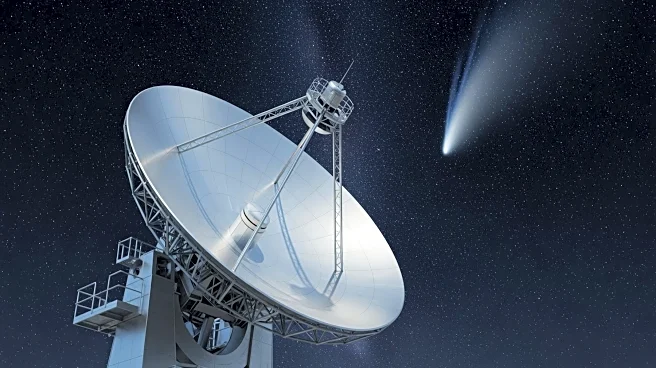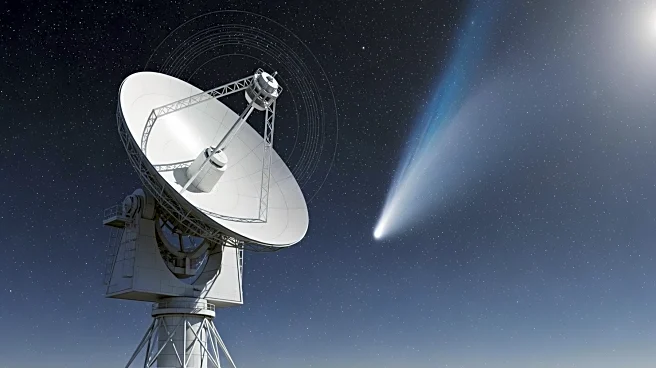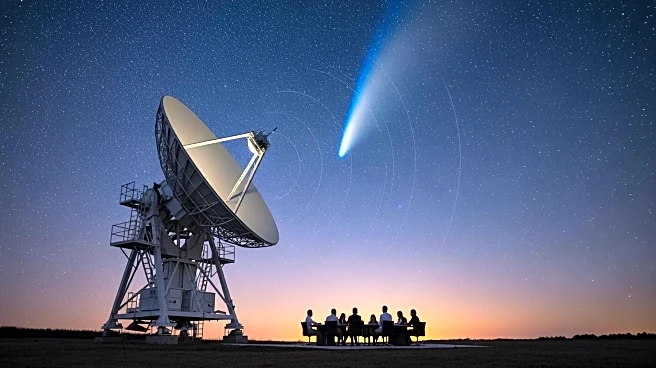What's Happening?
The MeerKAT radio array in South Africa has detected a radio signal from the interstellar comet 3I/ATLAS, confirming its natural origin. The signal, characterized by hydroxyl (OH) absorption lines at 1665 and 1667 MHz, is a result of sunlight breaking
apart water vapor from the comet. This detection supports the comet's natural identity, countering recent speculations about its artificial nature. The signal was observed on October 24, 2025, when the comet was positioned close to the Sun, favoring absorption over emission. This discovery aligns with previous optical and UV evidence indicating that 3I/ATLAS is an active, water-bearing comet.
Why It's Important?
The detection of hydroxyl absorption lines from 3I/ATLAS is significant as it provides independent evidence of the comet's natural composition, reinforcing the understanding of interstellar comets. This finding helps debunk theories suggesting the comet's artificial origin, emphasizing the importance of scientific observations in clarifying misconceptions. The confirmation of water activity in 3I/ATLAS contributes to the broader study of interstellar objects, offering insights into their behavior and composition. This discovery is crucial for astronomers as it provides a clearer understanding of the comet's nature and supports ongoing research into interstellar phenomena.
What's Next?
Following the detection, astronomers are expected to continue observing 3I/ATLAS as it reappears from solar glare. The comet's closest approach to Earth is anticipated in mid-December, although it will remain distant and faint. Further radio and spacecraft observations are planned, particularly as the comet passes near Jupiter in March 2026, potentially within the range of NASA's Juno spacecraft. These observations will aim to gather more data on the comet's composition and behavior, contributing to the scientific understanding of interstellar objects.
Beyond the Headlines
The radio detection of 3I/ATLAS has been framed by some as evidence of transmissions, but it is purely a chemical fingerprint of cometary activity. This discovery challenges viral claims about the comet's artificial origin, highlighting the importance of scientific evidence in dispelling myths. The detection underscores the role of radio astronomy in studying interstellar objects, providing valuable insights into their natural processes and contributing to the broader understanding of cometary physics.














